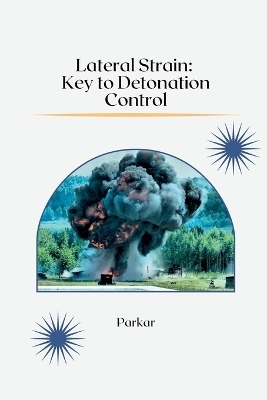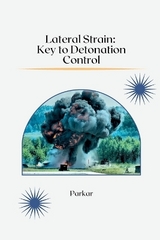Lateral Strain: Key to Detonation Control
tredition (Verlag)
978-3-384-22688-4 (ISBN)
Professor Dr. Parkar, for your Maternal Health course, I propose "Womb Stress: Programming Disease Risk." This book explores the fascinating concept of fetal programming, where a mother's experiences during pregnancy can influence a child's future health risk. We'll delve into the science behind this, analyzing how stress and environmental factors can potentially shape a baby's susceptibility to chronic diseases. "Womb Stress" goes beyond immediate effects. We'll explore the link between maternal stress, epigenetics, and long-term health risks, examining how the womb environment might influence gene expression and impact the development of vital systems like the immune system and heart. The book even explores the possibility of transgenerational transmission of disease risk, highlighting the potential long-term consequences of a mother's experiences. But "Womb Stress" isn't just about challenges. By understanding the impact of womb stress, we can emphasize the importance of promoting maternal health, stress management techniques, and comprehensive prenatal care. This book offers valuable insights for anyone interested in fetal programming and the importance of a healthy pregnancy for lifelong wellbeing.
| Erscheint lt. Verlag | 13.5.2024 |
|---|---|
| Verlagsort | shivaji bridgge |
| Sprache | englisch |
| Maße | 155 x 234 mm |
| Gewicht | 175 g |
| Themenwelt | Naturwissenschaften ► Physik / Astronomie ► Allgemeines / Lexika |
| Naturwissenschaften ► Physik / Astronomie ► Thermodynamik | |
| Schlagworte | advanced strain manipulation techniques • ballistician's guide to strain control • ballistics & lateral strain in weapons • detonation control mechanisms • detonation physics & material science • energetic materials & detonation control • explosives engineering & lateral strain • explosives material properties & strain • industrial applications of strain control • lateral strain in explosives • next-gen detonation control methods • optimizing explosive performance • research on lateral strain in explosives • safer & more precise detonations • strain effects on detonation wave |
| ISBN-10 | 3-384-22688-7 / 3384226887 |
| ISBN-13 | 978-3-384-22688-4 / 9783384226884 |
| Zustand | Neuware |
| Haben Sie eine Frage zum Produkt? |
aus dem Bereich




